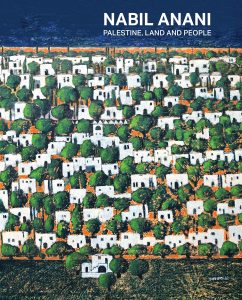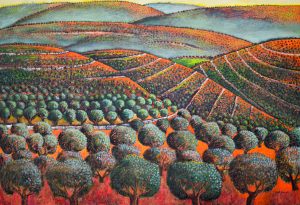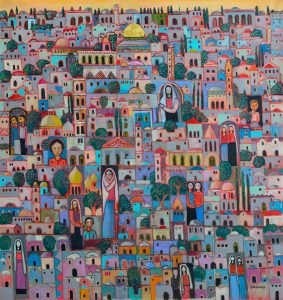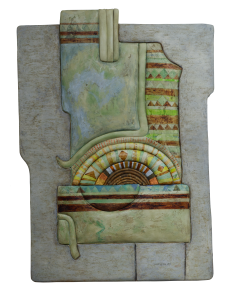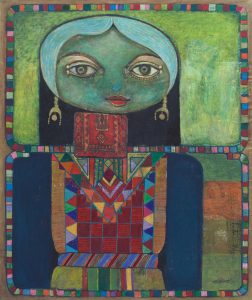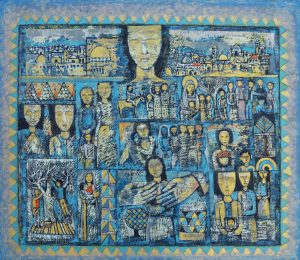Edited by Sulieman Mleahat and Martin Mulloy
Foreword by Mourid Barghouti
Saqi Books, London, 2018, 178 pages, £ 25
By Sulieman Mleahat
Nabil Anani: Palestine, Land and People is the first comprehensive book that charts Nabil Anani’s outstanding artistic journey which has spanned nearly five decades. When I introduced Martin Mulloy (co-editor) to Anani at his 2007 London exhibition, Journey into Script, he was mesmerized by the intricate and beautiful artworks on display at Foyles Gallery. At the same time, he was astounded that Anani had not yet had an internationally acclaimed publication to his name.
The reality is that, aside from a handful of general publications on Palestinian art, very few Palestinian artists have had the attention they deserve, with few publications documenting their work. This has led to limited international exposure and recognition within the wider art world: Palestinian art and artists have remained, until recently, relatively unknown.
In 2015, Martin and I developed a proposal for publishers in the United Kingdom. Saqi Books publishing house in London accepted our proposal with a positive desire to bring Anani’s work to a wider public. Publisher Lynn Gaspard was moved by the breadth and volume of Anani’s work. We immediately set about doing three things in parallel: raising the necessary funds for the project; commissioning writers who would do justice to Nabil’s life and work; and finally, collating high-quality images of his art. Perhaps the most challenging aspect of the project was securing high-quality images of works that were in private collections. Sadly, much of Anani’s early works were not documented at the time of their creation: this necessitated tracking them down, photographing them, and digitizing them. Individuals such as George Al Ama, Mazen Qubti, and Shukri Farwajeh, as well as the Dalloul Art Foundation − to name but a few − were very generous with their time and permitted us to photograph their collections and secure, and indeed preserve, stunning images of rare works.
Martin and I describe the project as a “labor of love,” as Anani trusted us to put together a book that would do justice to his art and to five decades of his work dedicated to promoting the Palestinian narrative. It was no easy task as funding is very limited, both in Palestine and the wider region, and writers were busy with their own projects and daily work. However, by early 2018, we had secured both the funding and contributions from notable Palestinian writers including Mourid Barghouti, Bashir Makhoul, Rana Anani, Tina Sherwell, Lara Khaldi, Housni Shehada, and Nada Shabout. Each of these writers took one aspect of Anani’s life and work and provided comprehensive descriptions and excellent analysis of his remarkable artistic journey. Together with 150 images of paintings and reliefs, the book is an outstanding document on one of Palestine’s most distinguished artists.
The book is wonderfully written and designed, and much like Anani’s work, it is beautifully produced. It is also a great testament to Palestine, its people, heritage, and recent history. As Mourid Barghouti puts it in his foreword: “In his paintings Anani is a novelist because he tells the story of a group of human beings too weak to tell their own powerful story. He is a poet when he seizes on a detail here and there: a glancing eye, the tilt of a neck, or miles of threatened trees; the frailty in a body in one instance, or amazing power in the same body in another. He is a historian when he chronicles through art the events of Palestinian life, its joys and sorrows, the various ways it disappears despite joy, and manifests itself despite death.”

